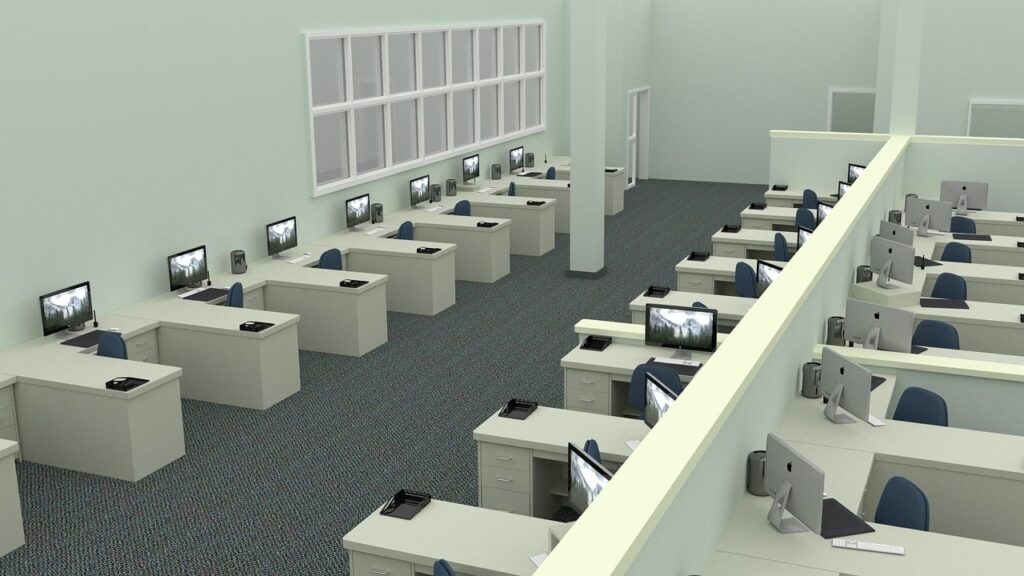The traditional cubicle, often characterized by its drab gray walls and utilitarian design, is transforming significantly. As the workplace evolves, so do the needs and preferences of employees. New cubicle designs are now focused on creating dynamic, comfortable, and productive environments. Here are some of the latest trends shaping the future of workspaces.
1. Open and Collaborative Spaces
One of the most notable trends in cubicle design is the shift towards open and collaborative spaces. Modern cubicles are designed to promote interaction and teamwork while still providing individual work areas. Low-profile partitions, glass dividers, and open-plan layouts create a sense of openness and foster communication among team members.
2. Flexible and Modular Designs
Flexibility is key in today’s dynamic work environments. Modular cubicle designs allow for easy reconfiguration to accommodate changing team sizes and project needs. Moveable partitions, adjustable desks, and modular storage units enable organizations to adapt their office layout quickly and efficiently. This flexibility is particularly beneficial for growing businesses and those with a fluid workflow.
3. Biophilic Design Elements
Biophilic design, which incorporates elements of nature into the workplace, is gaining popularity in cubicle design. Integrating plants, natural light, and organic materials can enhance employee well-being and productivity. Vertical gardens, planters, and natural wood finishes create a calming and inviting atmosphere, making the workspace more enjoyable and inspiring.
4. Ergonomic and Health-Focused Features
Employee health and well-being are top priorities in modern cubicle design. Ergonomic features such as adjustable desks, sit-stand workstations, and supportive seating help reduce strain and improve comfort. Additionally, features like anti-fatigue mats, monitor arms, and keyboard trays promote proper posture and reduce the risk of musculoskeletal issues.
5. Technology Integration
The integration of technology into cubicle design is transforming the way employees work. Modern cubicles are equipped with built-in power outlets, USB ports, and wireless charging stations to support the use of electronic devices. Advanced features like integrated screens, smart lighting, and IoT-enabled furniture enhance productivity and streamline workflow.
6. Acoustic Solutions
Noise is a common challenge in open-plan offices, and modern cubicle designs address this issue with acoustic solutions. Sound-absorbing materials, acoustic panels, and privacy screens help reduce noise levels and create a quieter work environment. These features are essential for maintaining focus and concentration, especially in busy office settings.
7. Personalization and Customization
Personalization is becoming increasingly important in cubicle design. Employees want to feel a sense of ownership and connection to their workspace. Customizable cubicles allow employees to personalize their work areas with features like adjustable shelving, pinboards, and decorative panels. This personalization not only enhances comfort but also boosts morale and productivity.
8. Sustainable and Eco-Friendly Materials
Sustainability is a growing concern in office design, and modern cubicles are being constructed with eco-friendly materials. Recycled and renewable materials, low-VOC finishes, and energy-efficient lighting contribute to a greener workplace. Choosing sustainable cubicle designs aligns with corporate social responsibility goals and promotes a healthier work environment.
9. Integrated Collaborative Zones
Collaborative zones are seamlessly integrated into modern cubicle layouts to encourage teamwork and idea-sharing. These zones may include comfortable seating, whiteboards, and communal tables. The strategic placement of collaborative spaces within the cubicle layout allows employees to easily transition between individual work and group discussions.
Conclusion
The future of cubicle design is centered around creating flexible, comfortable, and productive work environments. Open and collaborative spaces, modular designs, biophilic elements, ergonomic features, technology integration, acoustic solutions, personalization, sustainability, and integrated collaborative zones are all shaping the way we work. By embracing these trends, organizations can create modern workspaces that enhance employee well-being, satisfaction, and productivity. For innovative and comprehensive workspace solutions, explore the latest trends and ideas at corporateofficeint.com.








Leave a Reply